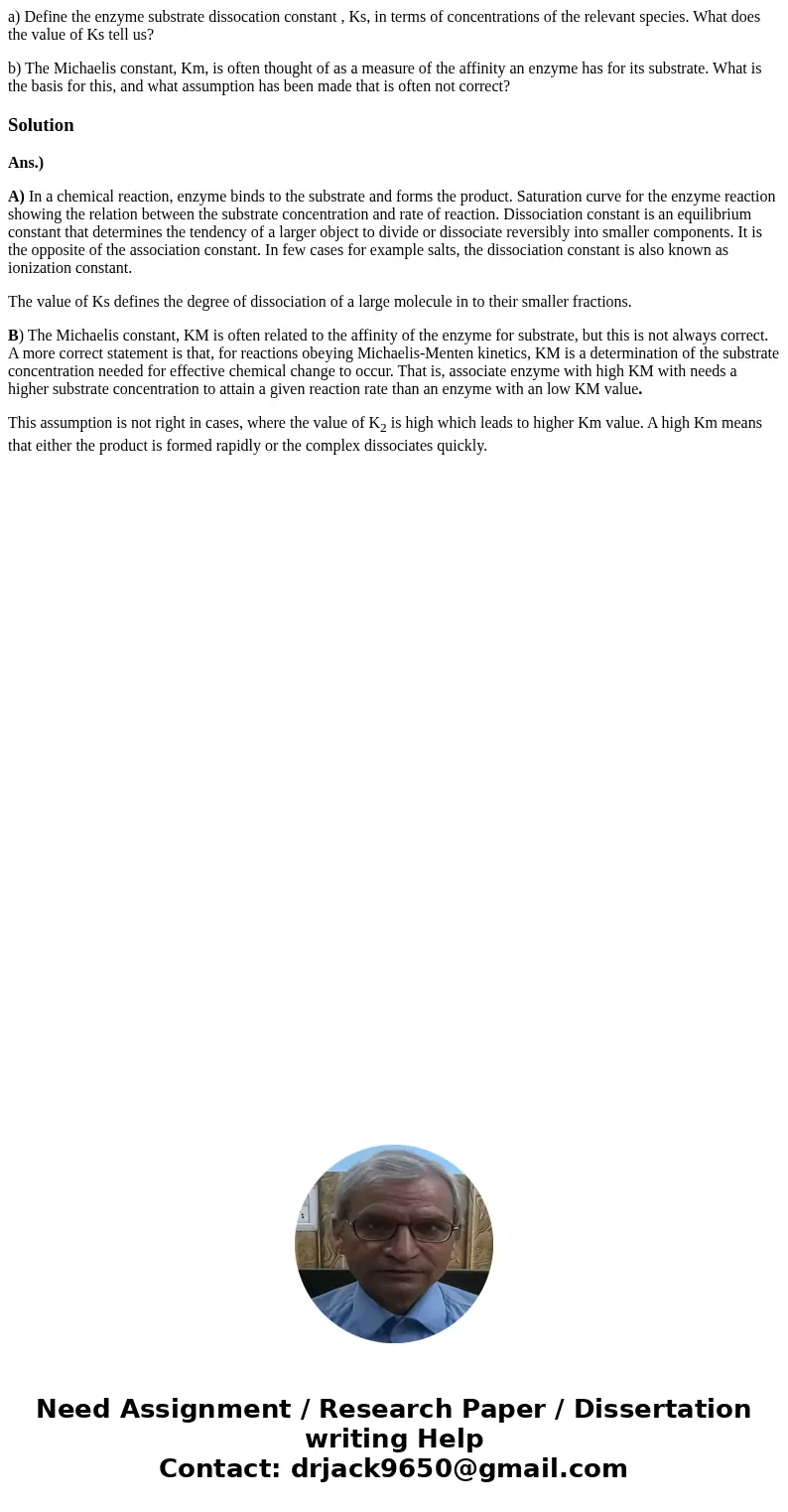a Define the enzyme substrate dissocation constant Ks in te
a) Define the enzyme substrate dissocation constant , Ks, in terms of concentrations of the relevant species. What does the value of Ks tell us?
b) The Michaelis constant, Km, is often thought of as a measure of the affinity an enzyme has for its substrate. What is the basis for this, and what assumption has been made that is often not correct?
Solution
Ans.)
A) In a chemical reaction, enzyme binds to the substrate and forms the product. Saturation curve for the enzyme reaction showing the relation between the substrate concentration and rate of reaction. Dissociation constant is an equilibrium constant that determines the tendency of a larger object to divide or dissociate reversibly into smaller components. It is the opposite of the association constant. In few cases for example salts, the dissociation constant is also known as ionization constant.
The value of Ks defines the degree of dissociation of a large molecule in to their smaller fractions.
B) The Michaelis constant, KM is often related to the affinity of the enzyme for substrate, but this is not always correct. A more correct statement is that, for reactions obeying Michaelis-Menten kinetics, KM is a determination of the substrate concentration needed for effective chemical change to occur. That is, associate enzyme with high KM with needs a higher substrate concentration to attain a given reaction rate than an enzyme with an low KM value.
This assumption is not right in cases, where the value of K2 is high which leads to higher Km value. A high Km means that either the product is formed rapidly or the complex dissociates quickly.

 Homework Sourse
Homework Sourse